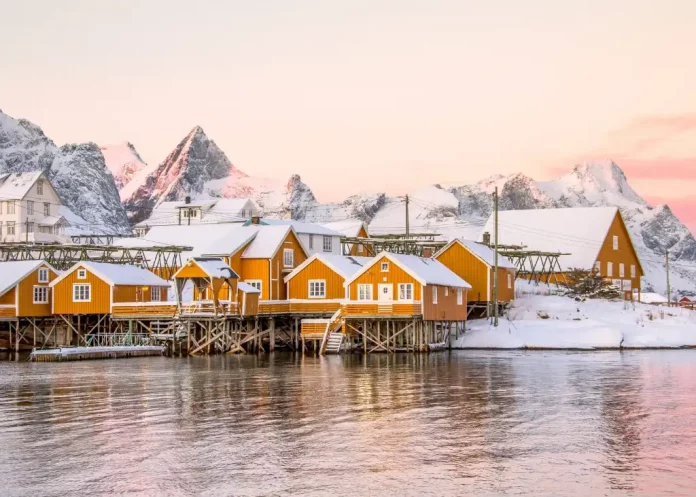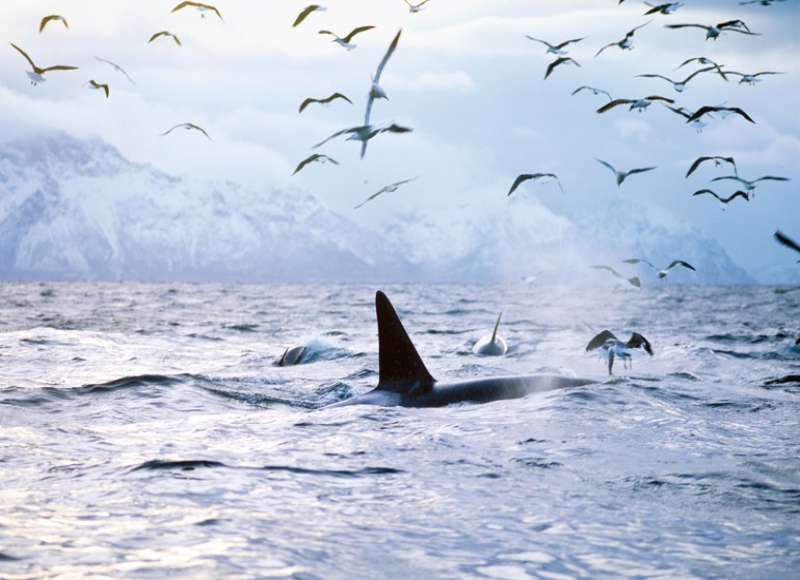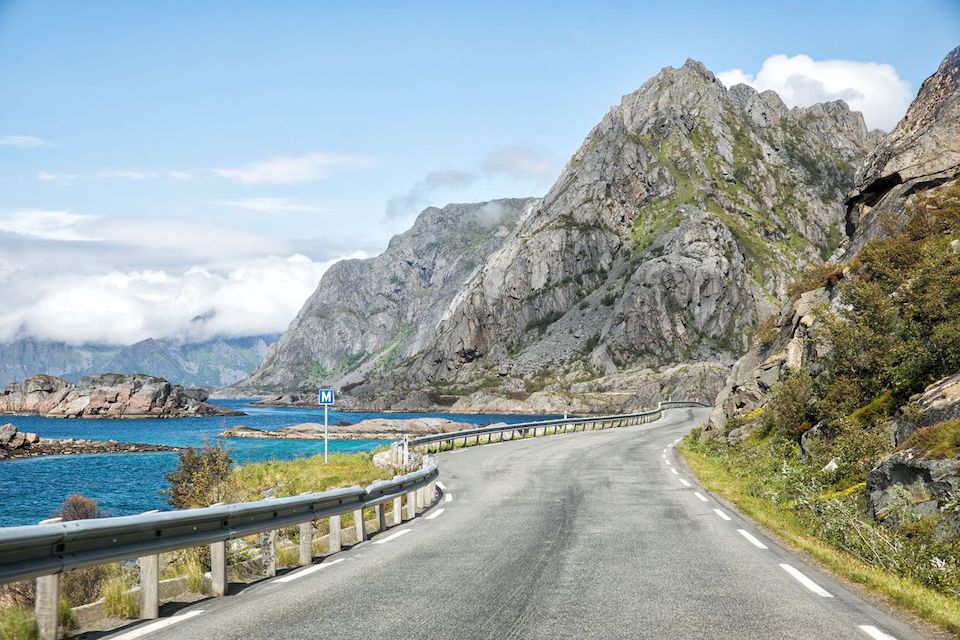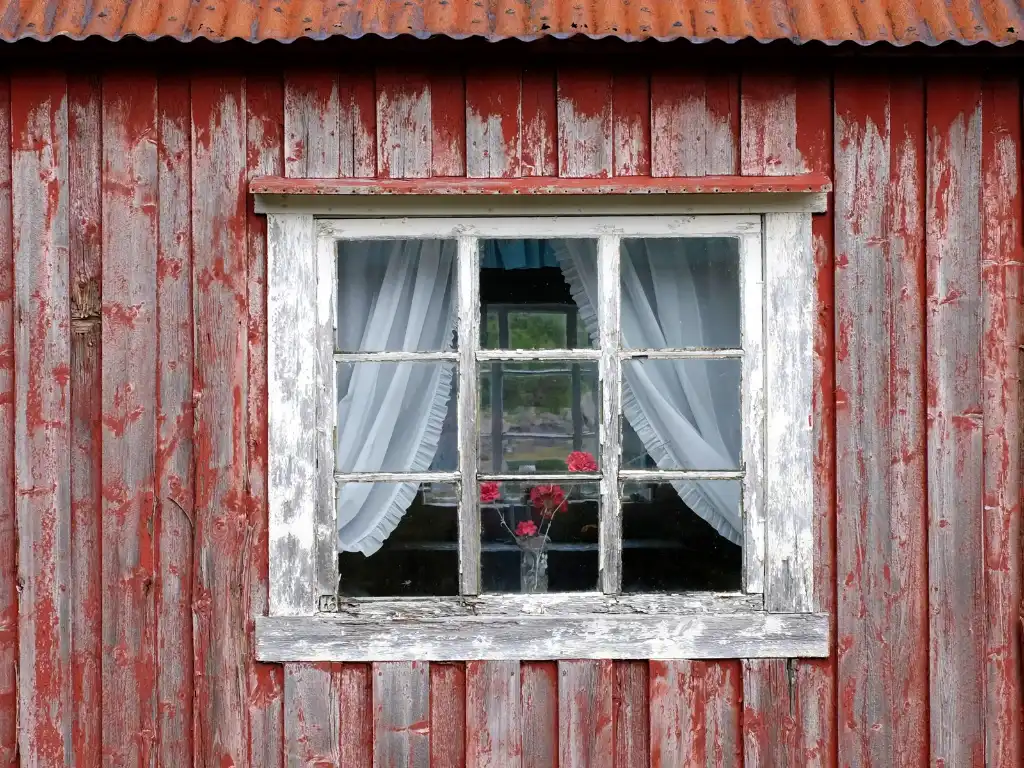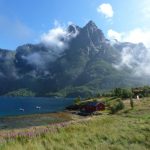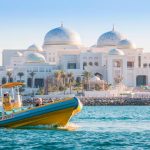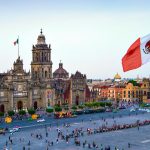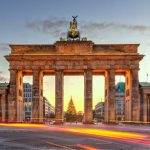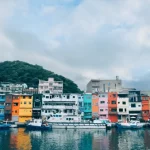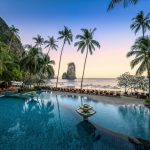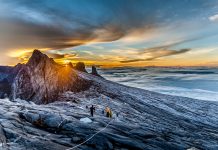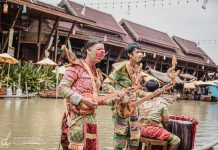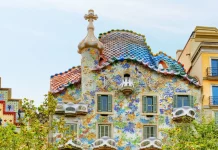Lofoten is often described as one of the most scenic places in the world. Lofoten is a nature lover’s dream destination with high vertical peaks, majestic fjords, white sandy beaches and most typically the red picturesque wooden houses of fishermen reflecting on the beautiful lake surface. Haukland Beach in Lofoten was voted the most beautiful beach in Europe by Lonely Planet.
- Flam Norway travel blog — The fullest Flam guide for first-timers
- Oslo travel blog — The fullest Oslo travel guide for a beautiful budget trip for first-timers
- Trolltunga blog — The fullest Trolltunga guided hike & How to get to Troll’s Tongue Norway?
- Bergen travel blog — The fullest Bergen travel guide & suggested how to spend 3 days in Bergen perfectly?
- My trip to Bergen — The promised land of peace of Norway
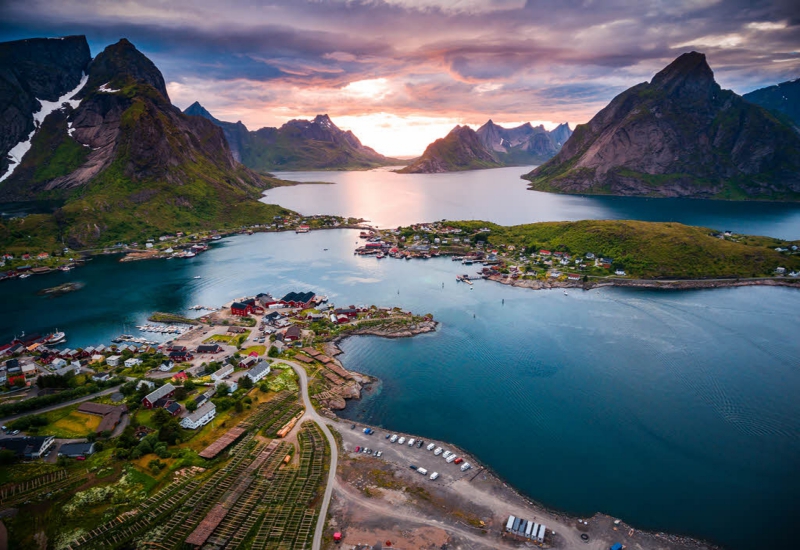
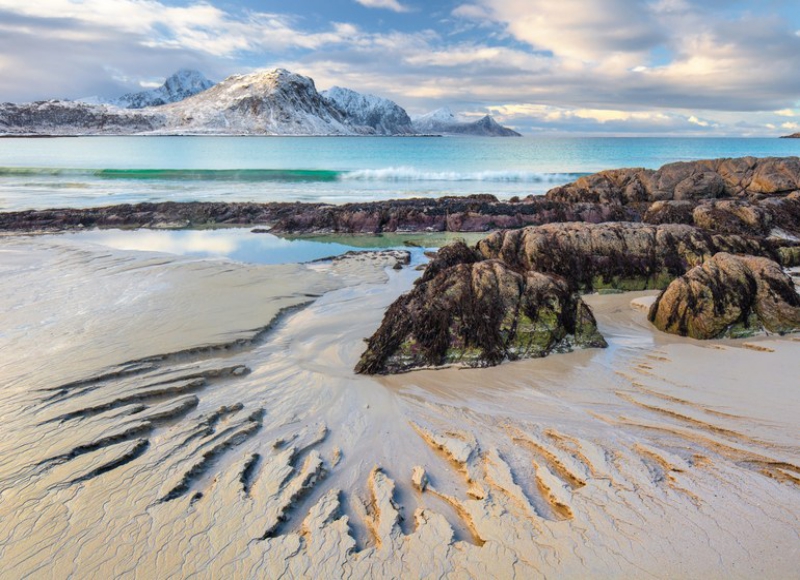
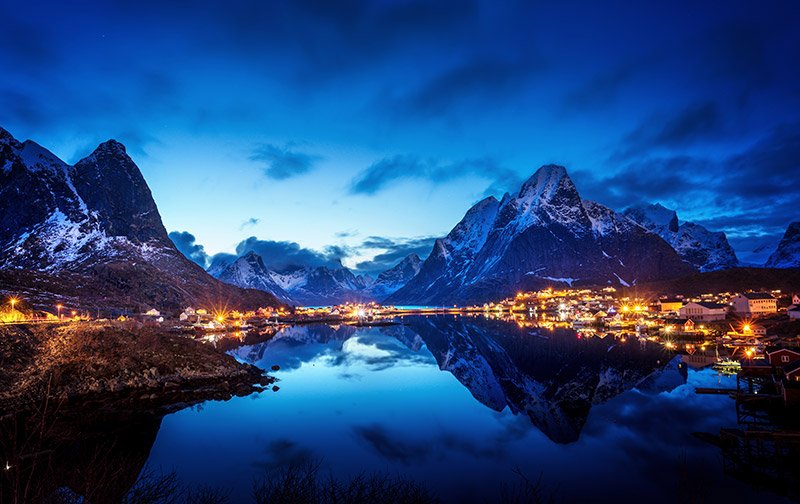
So, is Lofoten worth visiting, how to visit Lofoten, what to do in Lofoten and how to plan a budget trip to Lofoten for the first-time perfectly? Let’s check out our Lofoten travel blog (Lofoten blog) with the fullest Lofoten travel guide (guide to Lofoten, Lofoten tourist guide, Lofoten city guide, Lofoten guide) from how to get Lofoten, best places to visit, best time to come, what to eat as well as top things to do in Lofoten and suggested Lofoten 6 days to help you maximize your trip as follows!
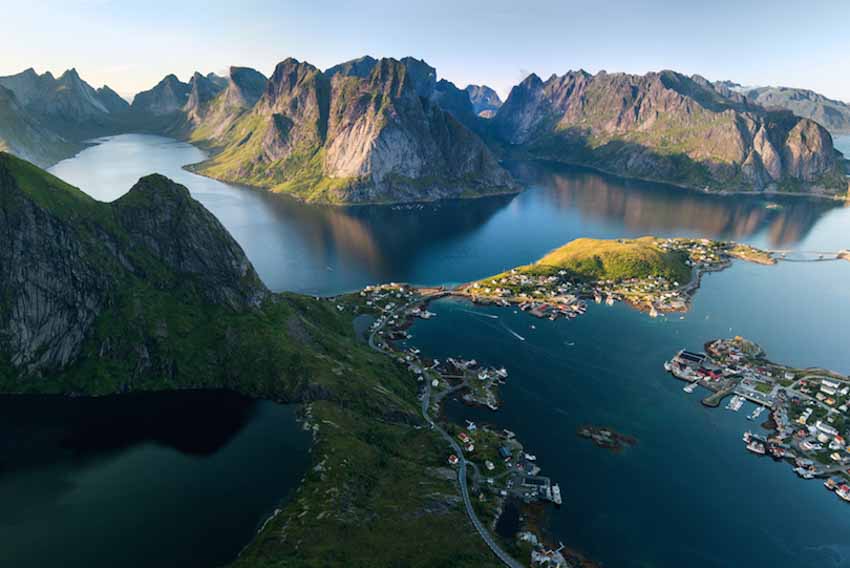
Visitors can also see a variety of wildlife on the Lofoten Islands, from humpback whales to white-tailed eagles to adorable, tiny porcupines. On land, keep an eye out for sheep that roam the beaches. Surely, there will be many visitors who want to come right away to take unique photos with the amazingly beautiful nature in Lofoten.
Lofoten covers almost all outdoor activities such as hiking, kayaking, fishing, hiking, skiing, cycling, surfing and kitesurfing. Not only the scenery is stunning, but in Lofoten you can see the Northern Lights from September to April and the Midnight Sun from May to July. So why not try surfing under the light of the Northern Lights or horse riding along a white sand beach in the midnight of summer?
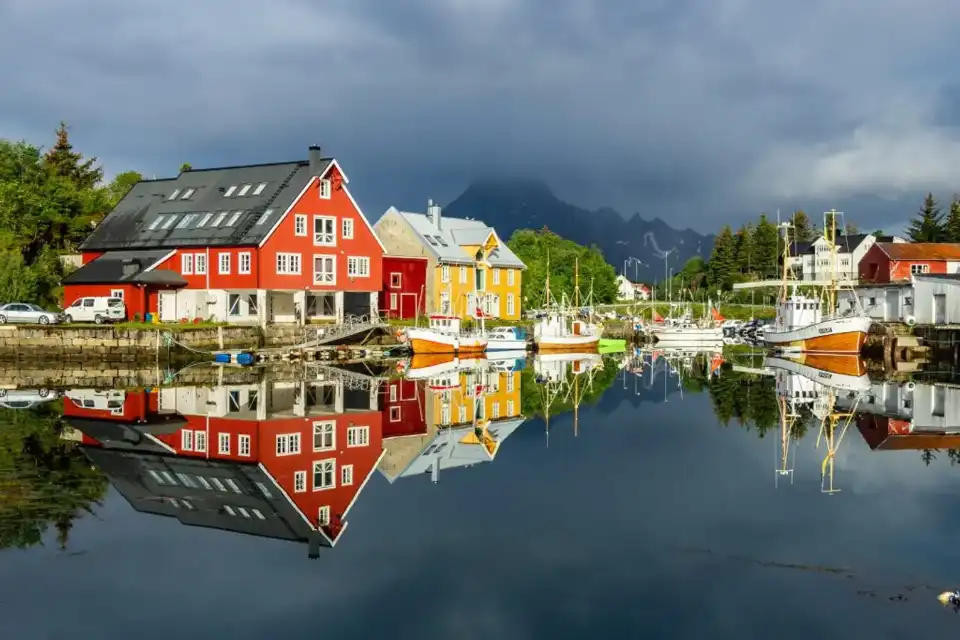
Located in the far north of the Arctic Circle, Lofoten is a place where nature has not been affected much by human hands. Granite mountains hide many surprises. From idyllic fishing villages to seemingly alien beaches in the Arctic Norway, the Lofoten Islands have it all.
Overview of Lofoten (#lofoten travel blog)
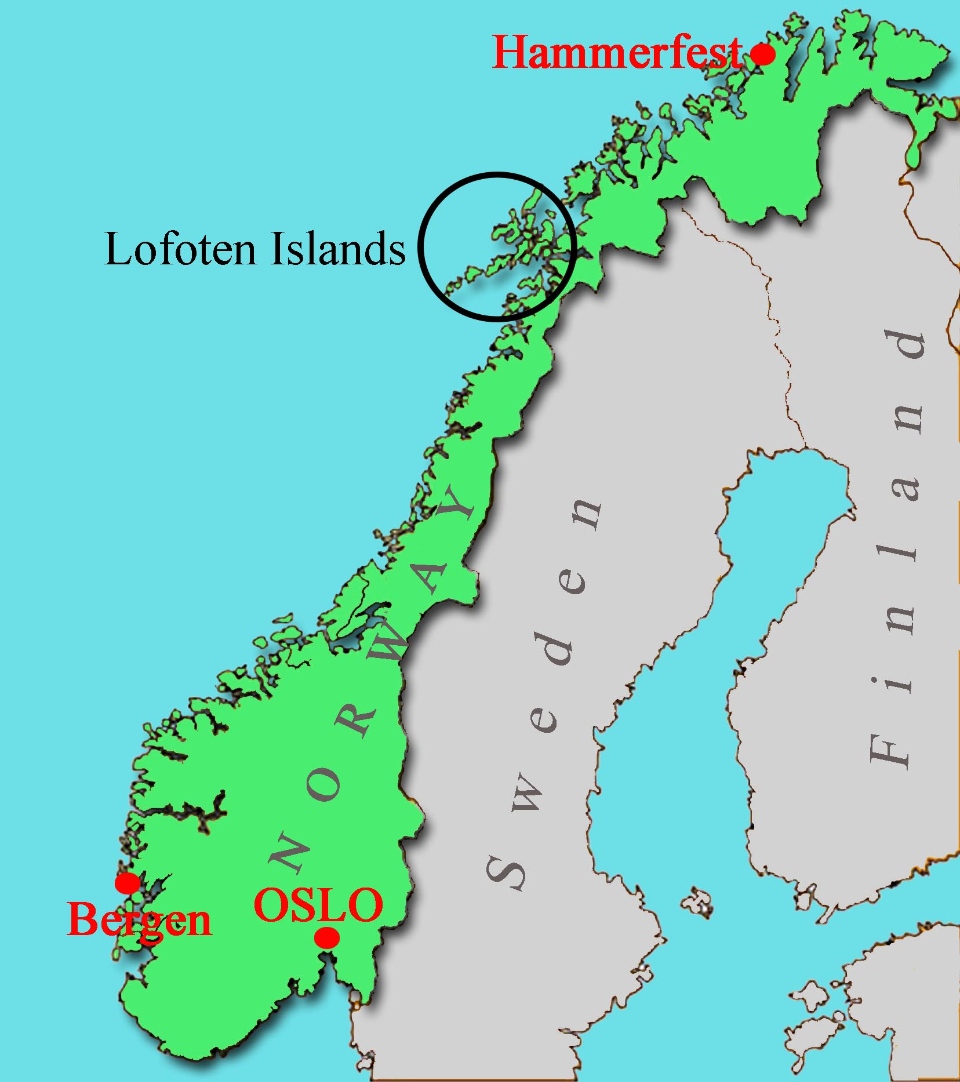
Lofoten is an archipelago located in the northernmost part of Norway, 1195km from the capital Oslo, about 300km north of the Arctic Circle. Lofoten is about 150km long and consists of seven islands connected by bridges and tunnels. You can drive from the northern end of Lofoten (the town of Svolvær) to the southern end (the village of Å) in just a few hours. However, you could spend weeks exploring small villages, trekking in the mountains, surfing or simply relaxing on Norway’s finest white-sand beaches.

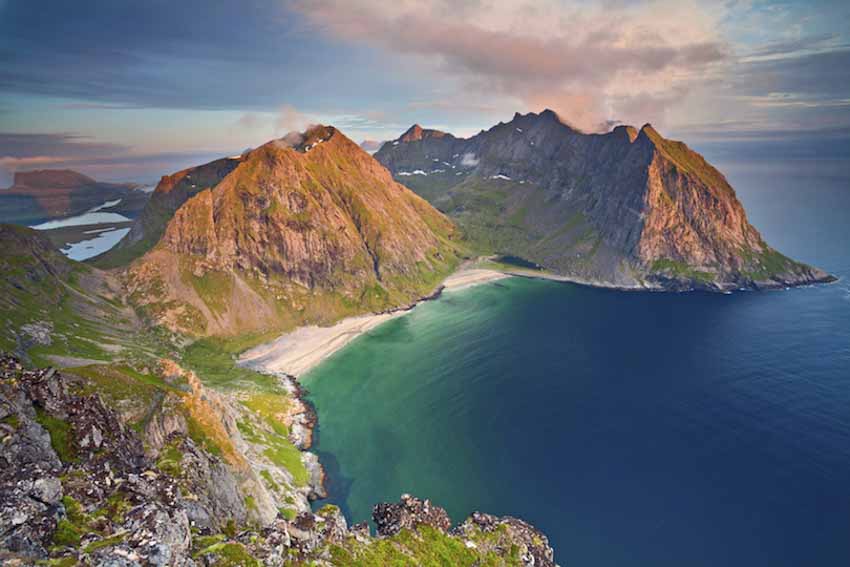
Lofoten is an archipelago in the county of Nordland, Norway. Known for its breathtaking scenery of majestic mountains with beaches, fjords and unspoiled scenery. Above of all, the islands are connected by bridges and trails that run the length of the archipelago creating a truly breathtaking scene.
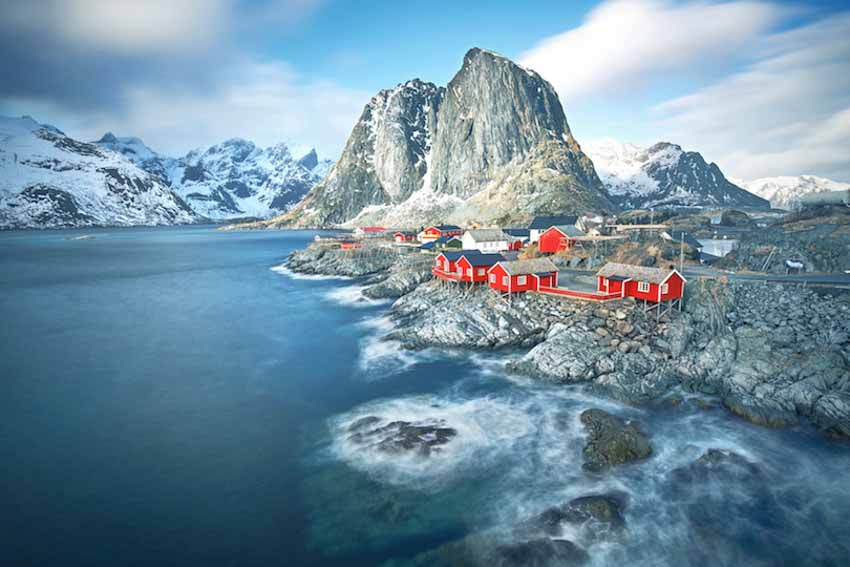
It is well documented that, Lofoten is closely related to the Viking Age – an era in Norse history from about 793 to 1066. This period is known for its numerous plundering expeditions of Vikings, followed by large-scale occupations. Therefore, when visiting the Lofoten Islands, visitors can discover the unique features of a bygone era.
The Lofoten Islands are easy to spot on a map. The islands jut out from one of the narrowest parts of Norway all the way to the frigid Norwegian Sea. The archipelago is a dream destination for many travelers from all over the world. It got its name “Lofoten” from its shape, which is the footprint of a lynx. Step into the wild, get away from the busy cities, and explore the endless horizons of this paradise for yourself!
When to come? (#lofoten blog)
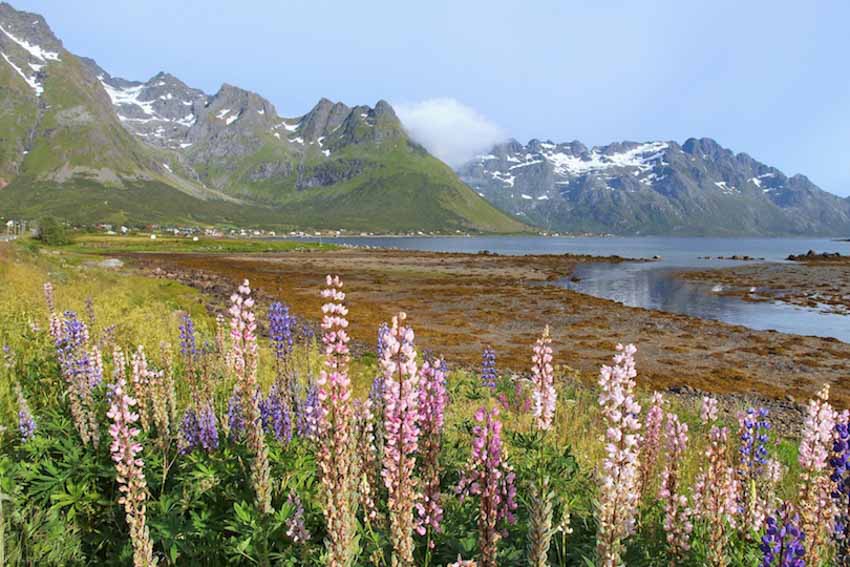
Have the same latitude as Nunavut in Canada and Murmansk in Russia, but the climate on these islands is surprisingly mild due to the Gulf current, North Atlantic current and Norwegian current. The weather is warmer than elsewhere, bringing excellent conditions for tourists when coming to Lofoten Islands.
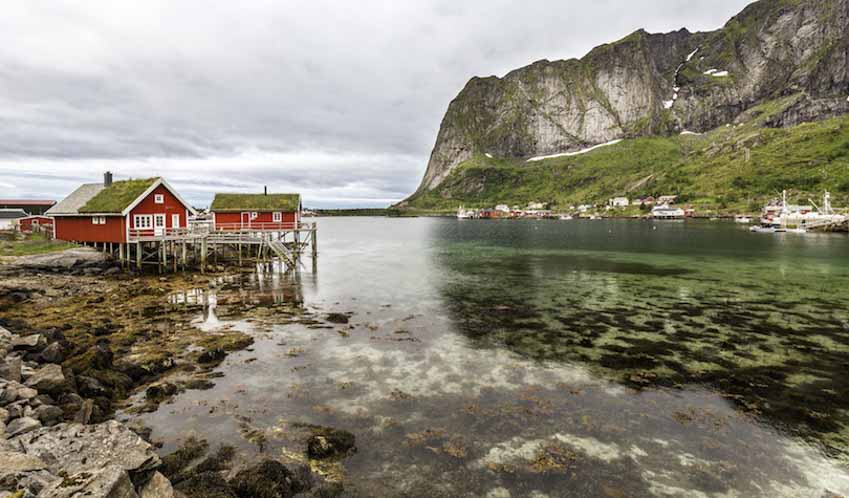
Even on the main islands, winter temperatures rarely drop below freezing, while in summer temperatures above 16°C are considered warm. Although snow is visible on the mountains in summer, actual snowfall on lowlands tends to be much lighter. Because it is a coastal area, it can rain all year round. The wettest months are September to November.
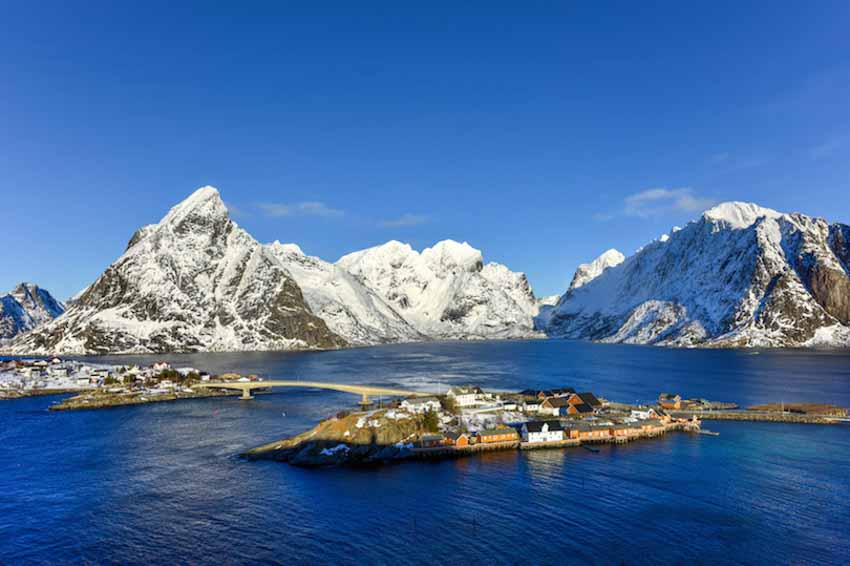
If this is your first time to the archipelago, July and August are the bustling time in Lofoten. However, depending on the purpose of travel, the time when each visitor chooses to come to this destination will also be different.
If you’re yearning for a Nordic white summer day, head to Lofoten in early July. If you want to get away from the crowds on the hike, stop by Lofoten in late August.
While summer brings wonderful midnight sun (a milder climate, of course), winter has its own celestial wonders for those willing to fight the cold. A magical light called the Northern Lights radiates throughout space, making viewers feel as if they are lost in the Milky Way. If you want to enjoy this beautiful scene, do not hesitate to come to Lofoten between September and March next year.

Notes on clothes before coming to Lofoten
Lofoten has a humid climate even in summer. Therefore, make sure that your outermost layer of clothing has good water absorption. Please prepare gloves and thick walking shoes/boots because you will be walking quite a lot to admire the majestic beauty of Lofoten.
Instead of choosing a really thick and bulky coat, we advise you to wear many layers. Not only will this help you stay warm more efficiently, but it will also ensure you are more active.
How to get to Lofoten? (#lofoten travel guide)
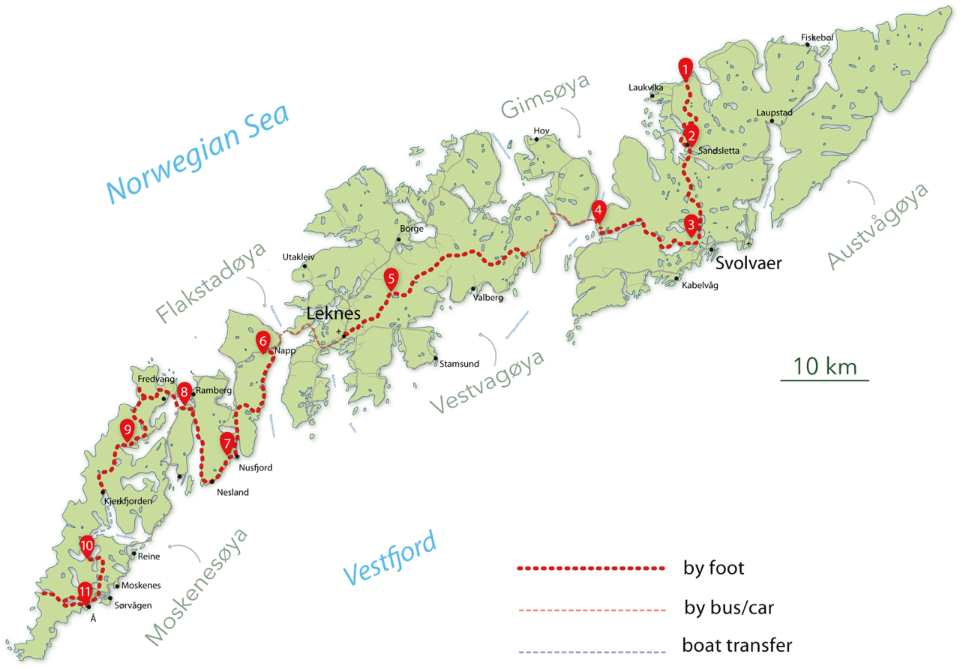
Plane (#lofoten travel blog)
There are several small airports on the islands that are served by small planes. For most people, the only realistic option would be to fly to Svolvær or Leknes from Bodø, from which there are connecting flights to from Oslo.

Traveling by air is the fastest and most efficient way to get to Lofoten. Lofoten has two main airports, Svolvær and Leknes, serving domestic destinations only. Svolvaer connects flights from Bodø, Oslo, Røst, Stokmarknes and Leknes connects flights from Bodø, Oslo, Tromsø. The closest international airport that you can reach by land is Harstad/Narvik located in Evenes.
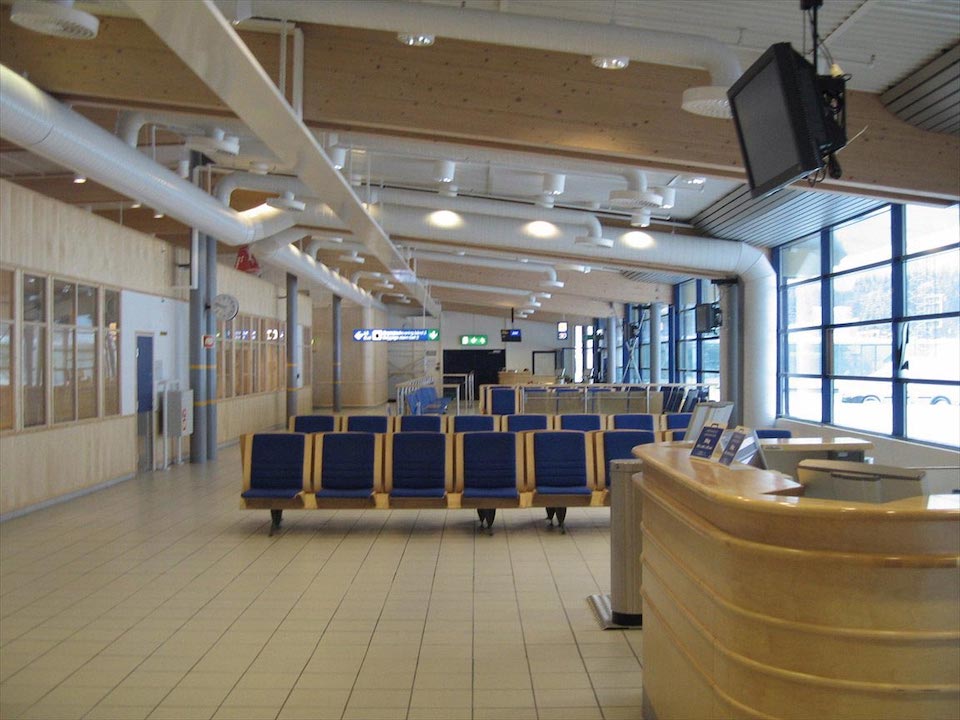
Direct flight time:
- From Oslo to Evenes: 1 hour 40 minutes
- From Oslo to Bod: 1 hour 30 minutes
- From Tromsø to Evenes: 35 minutes
- From Troms to Bod: 50 minutes
- From Bod to Svolvær: 25 minutes
- From Bod to Røst: 25 minutes
- From Røst to Svolvær: 25 minutes
Drive
You can drive from Oslo, Bergen, Trondheim to Lofoten, but the distance is quite long and requires a long trip. The most convenient way is to go to the airports near Lofoten and rent a self-drive car. Car rental services are available at Bodø, Svolvær, Leknes and Harstad/Narvik airports.
Driving time to Lofoten
- From Tromsø to Svolvær: 6 hours 10 minutes
- From Tromsø to Å: 8 hours 20 minutes
- From Harstad / Narvik Airport to Svolvær: 2 hours 30 minutes
- From Harstad / Narvik Airport to Å: 4 hours 40 minutes
Note:
- Renting a car at an airport like Harstad/Narvik in Evenes is probably the best option.
- The E10 road through Lofoten is paved and runs through a lot of villages and majestic scenery so catch a flight to Lofoten early in the day to enjoy the most time in Lofoten.
- You should book a car rental at least 1-2 months in advance to get the type of car you want and the best price.
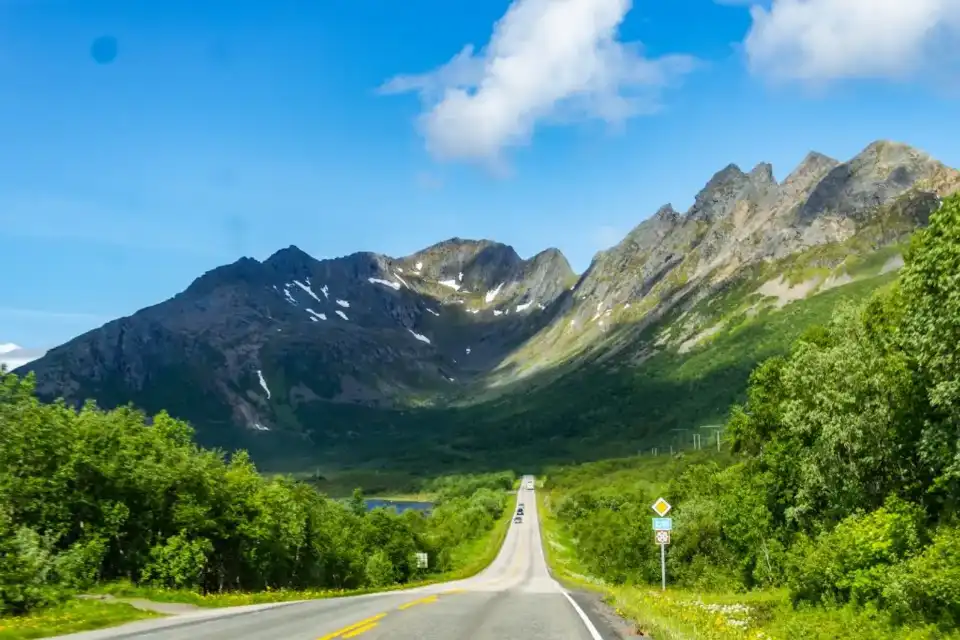
Ferry (#lofoten blog)
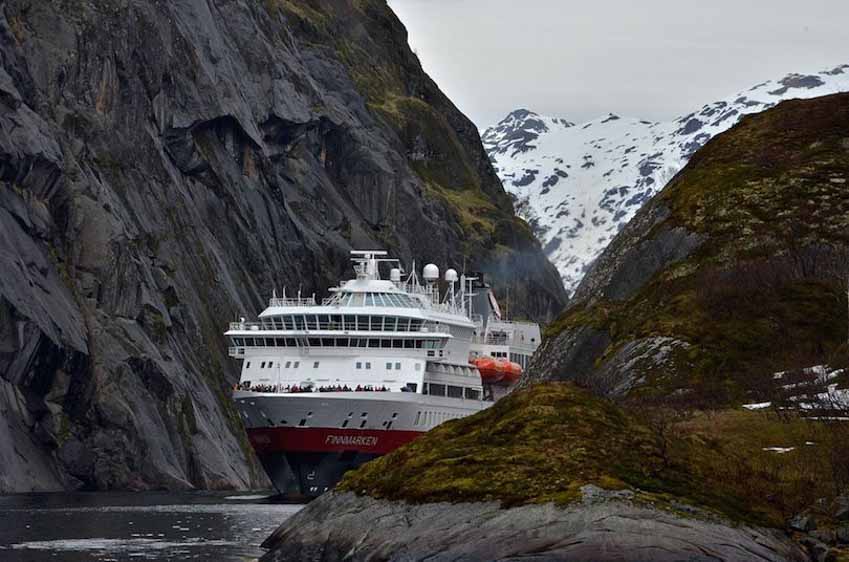
The traditional way to get to Lofoten is by ferry from Bodø. There are three destinations to choose from: Moskenes, Væroy and Røst. Ferry routes change throughout the year but there is usually at least one ferry per day to Moskenes.
- From Bod to Moskenes: 3 hours 15 minutes to 4 hours
- From Bod to Væroy (via Moskenes): 5 hours 30 minutes
- From Bodø to Røst (via Moskene and Væroy): 7 hours 15 minutes
For information on ferry schedules, visit the website: https://www.reisnordland.com/
Note:
- You should take seasickness medicine before boarding the ferry.
- During peak season you should book tickets in advance. During the low season, ferries run less often, on a first-come, first-served basis, so you must arrive at the ferry terminal at least two hours before departure time.
Getting around Lofoten (#lofoten guide)
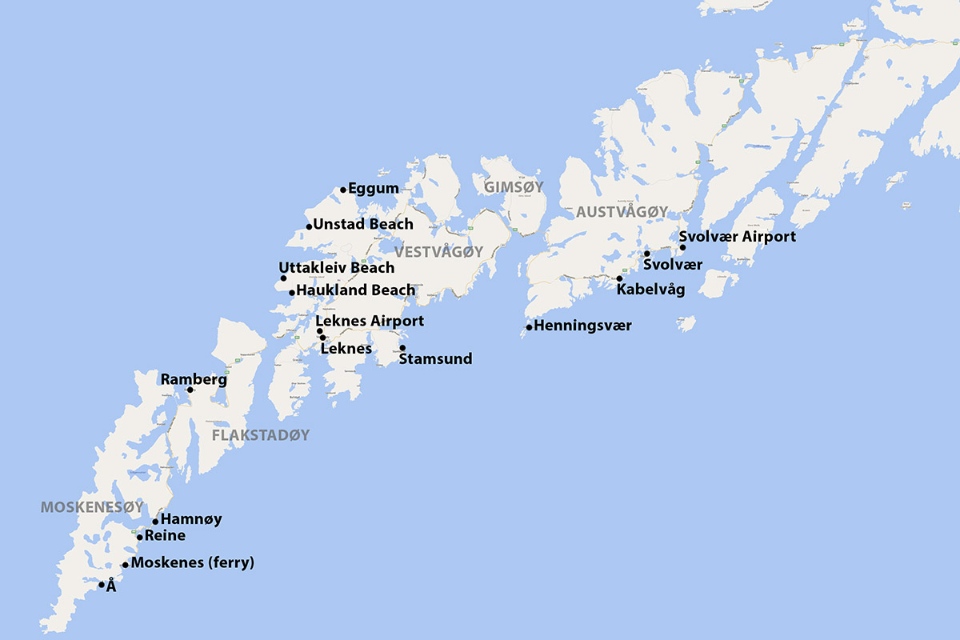
If you land at Evenes airport, you can catch a bus to the center of Svolvaer and neighboring towns by public bus, the price is 449NOK equivalent to $45 and travel time is about 3 hours. Fare, buy tickets at website or app: https://www.nor-way.no/
The most convenient way to getting around Lofoten is to rent a self-driving car to take the initiative in time and go to places that public buses cannot reach. You can rent a car in Bodo, Harstad/Narvik, Leknes and Svolvaer airports.
Public transportation in Lofoten is administered by Nordland County. The easiest way to plan your travel is to use the Reis Nordland website and purchase tickets on the Billett Nordland app. Buying tickets using the app saves 20 NOK equivalent to $2.5 for all tickets or you can pay by debit or credit card when getting on the bus. Buses in Lofoten do not have as many regular trips as in other big cities, in fact there are routes that only have a few buses a day so you need to consult the bus schedules and plan carefully. You can buy a Travel Pass Nordland valid for 7 days, traveling on all buses and fast ferries for 1290 NOK, equivalent to $127.77. Refer to bus information and Travel Pass Nordland at the website: https://www.reisnordland.com/travel-pass-nordland
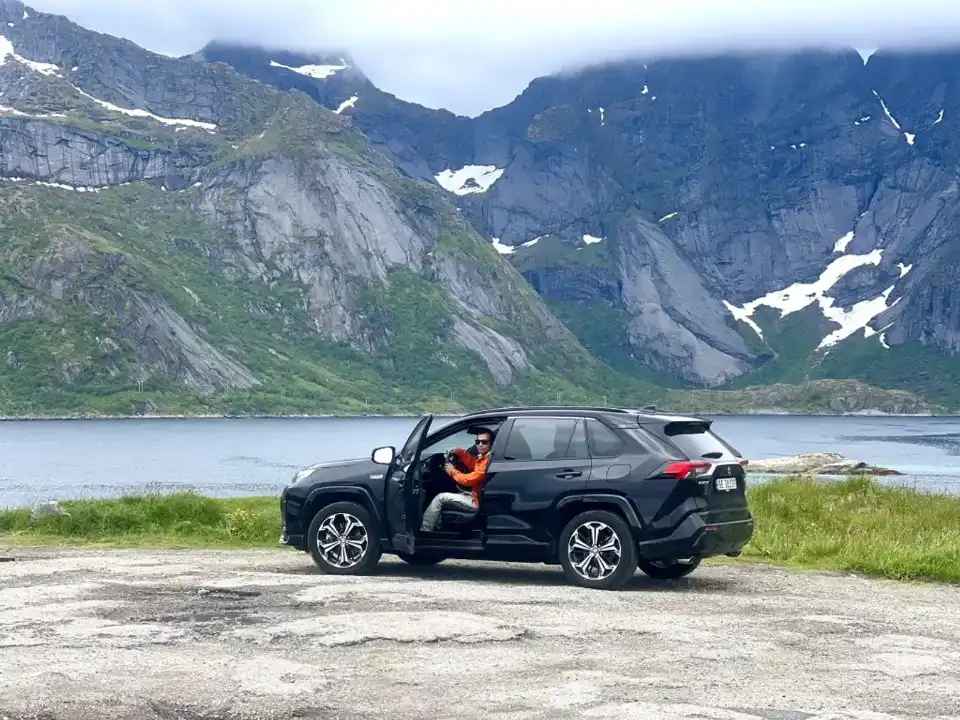
One of the biggest downsides to visiting the Lofoten Islands is public transportation. While it’s comfortable and generally reliable, frequency is the biggest issue. For example, some routes may run only once a day or not on Sundays.
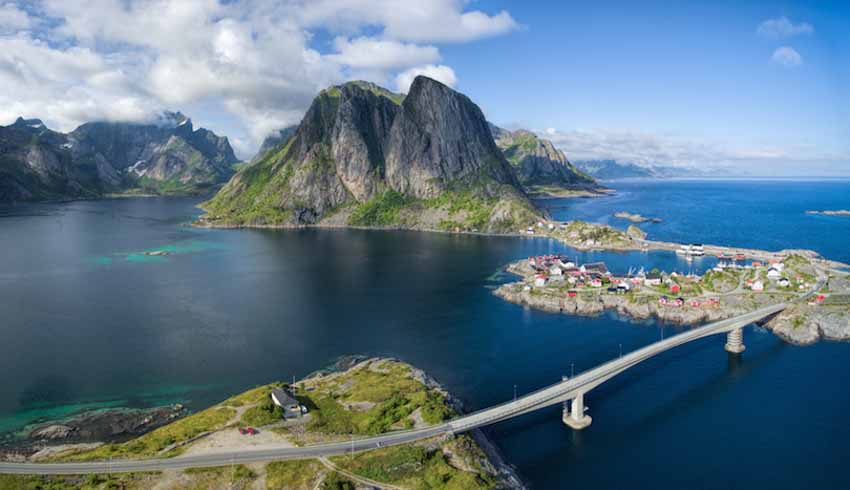
Cycling is an increasingly popular option for seeing the best of northern Norway as it gives you more flexibility, especially if you combine it with a camping trip.

Where to go and what to do in Lofoten?
Svolvaer (#lofoten guide)
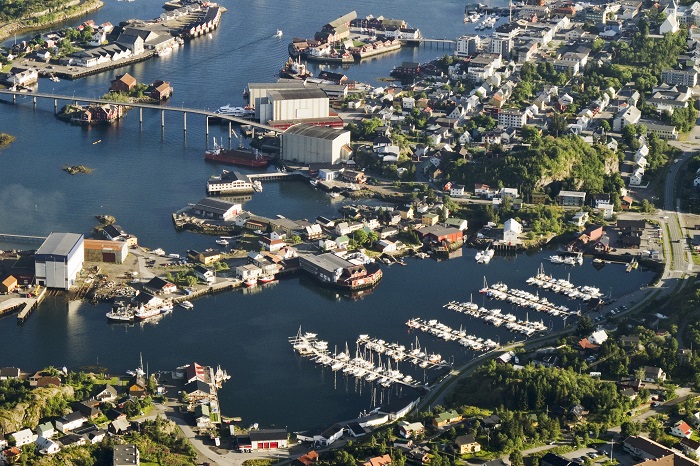
Svolvaer is the capital of Lofoten, it is the first city you come across as you drive into Lofoten and is also the center of the archipelago. Svolvaer has a Svolvær Hellem airport as well as ferries and speedboats. Although Svolvær is the largest city in Lofoten, it is quite small with 4,736 inhabitants. The town is hidden among high mountains, fjords, blue sea and with poetic villages. In addition to visiting the small and beautiful villages of Lofoten, the most popular tour in Svolvaer is taking a cruise to Trollfjord and visiting the small island of Svinoya.
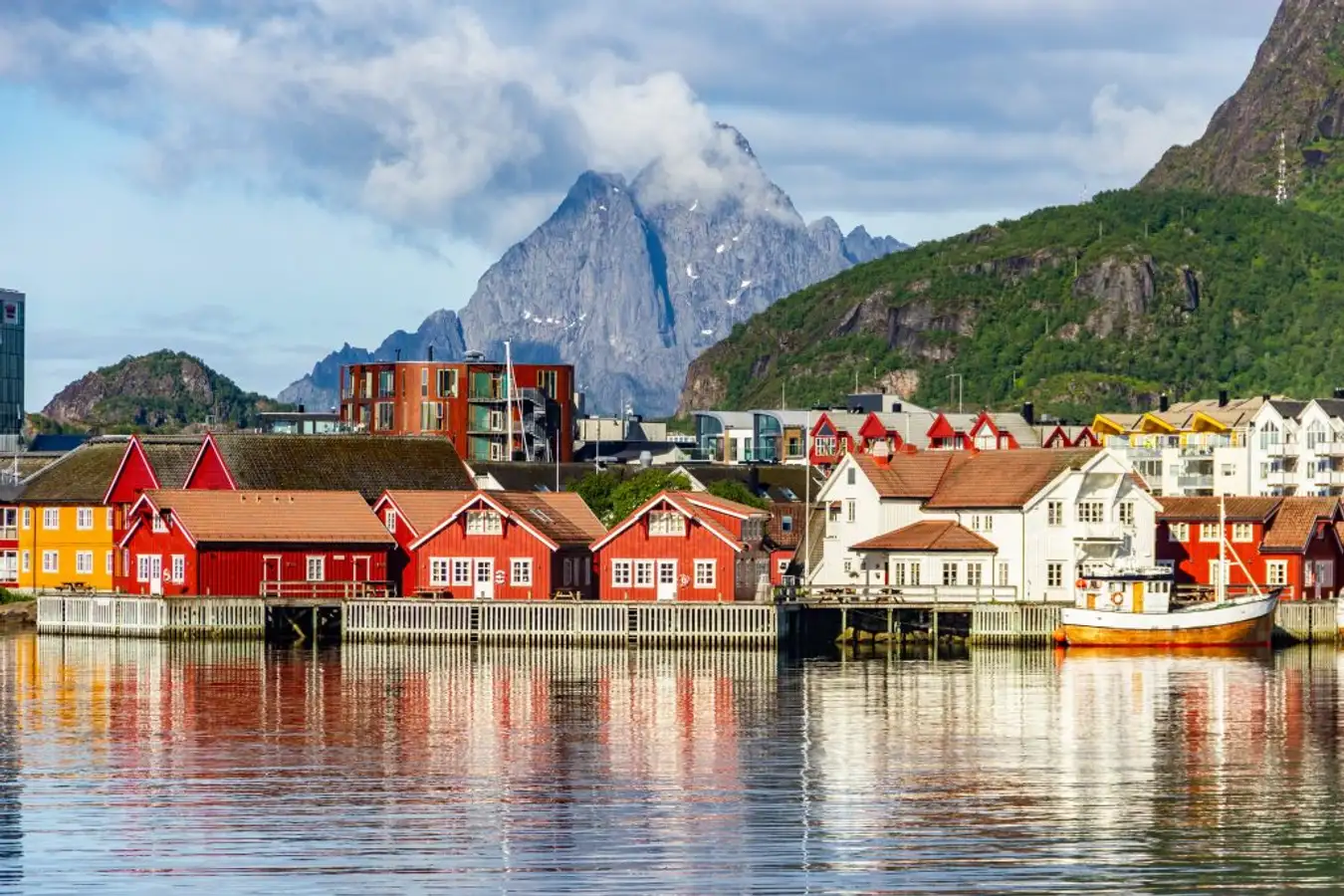
Kabelvåg
The lovely and cozy little town of Kabelvåg is just a 10-minute drive (5 km) from Svolvær. It is the oldest town in Lofoten and of the whole of Northern Norway, dating back to Viking times. You can visit downtown, Lofoten museum, Lofoten aquarium and Espolin Art gallery. Especially in Kabelvåg there is the most famous church Lofoten -Vaagan Church. The church was built in 1898 and is the largest wooden building built in Gothic Revival style originating from the late 1740s in England with a capacity of 1200 people.

Henningsvær
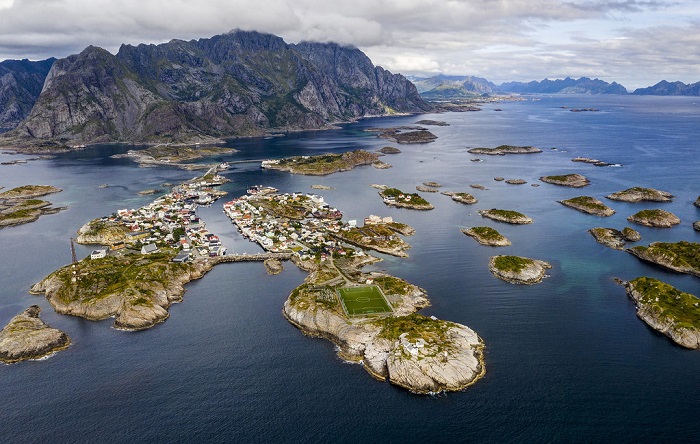
Henningsvær (25 minutes’ drive from Svolvær) is Lofoten’s most posh village with cafes, restaurants, bars, shops and art galleries. Trevarefabrikken – the busiest cafe, restaurant, bar, hotel, yoga center here. In addition, Henningsvær also houses the Klatrekafeen cafe and two art galleries Kaviar Factory and Art Gallery Lofoten.
Henningsvær’s most famous attraction is the Henningsvær football field located close to the sea. This is a very popular place on Instagram and Facebook.
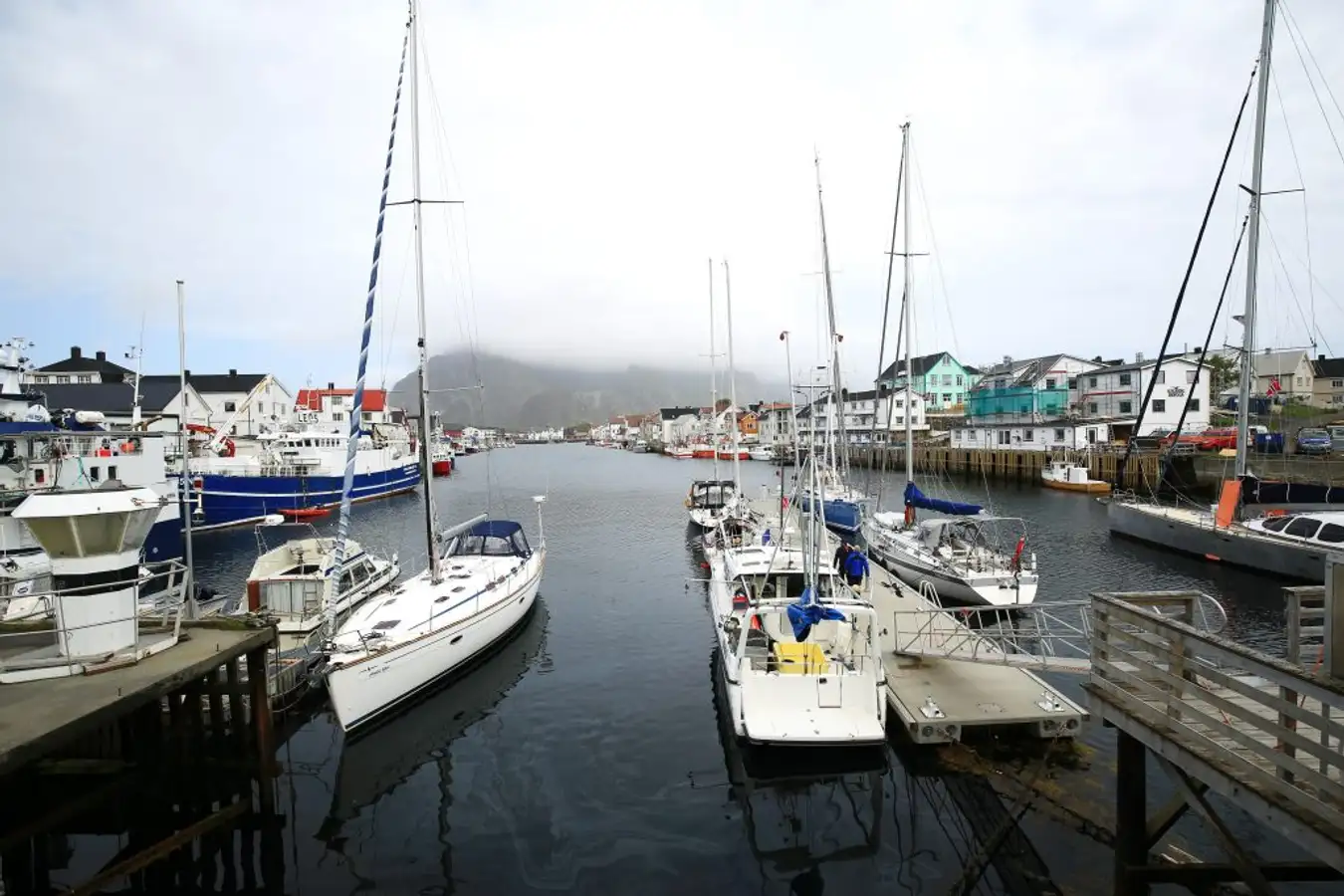

Reine
Reine is Lofoten’s most beautiful and most photographed fishing village. With its location between the fjords and high mountains, the poetic coastline surrounding the village with the houses painted in eye-catching yellow and red, Reine is a must-see when visiting Lofoten. This is one of the most photographed villages in Norway and it is very popular on Instagram. It can be said that when it comes to Lofoten is referring to Reine because it is often chosen as the cover of travel books and brochures about Lofoten and Norway. Reine is a bustling fishing village and famous for its cod trade from 1743 to the present.
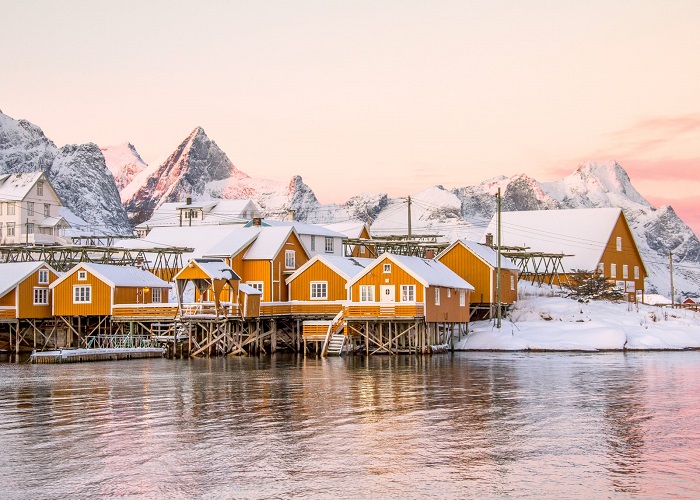
Go to Reine and you’ll find plenty of Rorbuer (traditional Norwegian fisherman’s houses used as temporary accommodation for fishermen when fishing along the Lofoten coast during the cod season from January to April). Today it is renovated and modernly decorated into a very cozy restaurant, hotel, and cafeteria.
The famous photo spot in Reine is the red Eliassen Rorbuer on Hamnoy Island with the background of the sea and majestic mountains. To see and capture this scene you just need to stand on the Hamnoy bridge and bring your camera. The next Reine photo shoot location is on the small bridge connecting the two islands of Olenilsøya and Sakrisøy. From here, you will be able to capture the beautiful island of Sakrisøy with the yellow Rorbu along the coast.
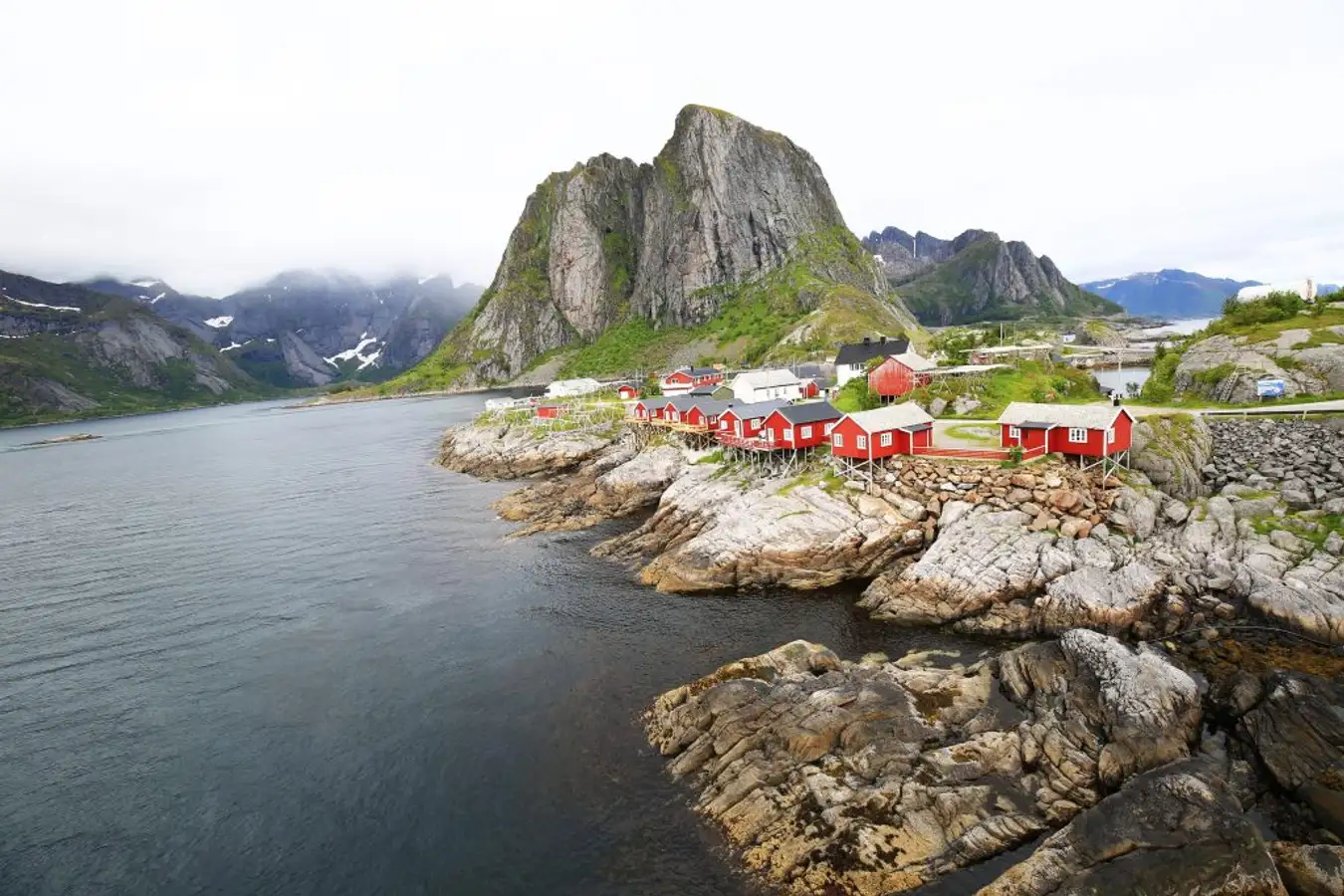
The most famous attraction in Reine is at the top of Reinebringen. From the foot of the mountain to the top, there are about 2000 stone steps and the climbing time is about 2 hours/way. The view at the top of Reinebringen is truly breathtaking, majestic and poetic as you can see the entire Reine village with its beautiful fjords Reinefjorden, Kjerkfjorden and Vorfjorden, bridges connecting small islands and a lake on the green mountain.
There are also many other recreational activities in Reine such as kayaking, cruising through the Reinefjorden fjords, visiting the island of Værøy, walking to the romantic Horseid and Bunes beaches, enjoying cod dishes…
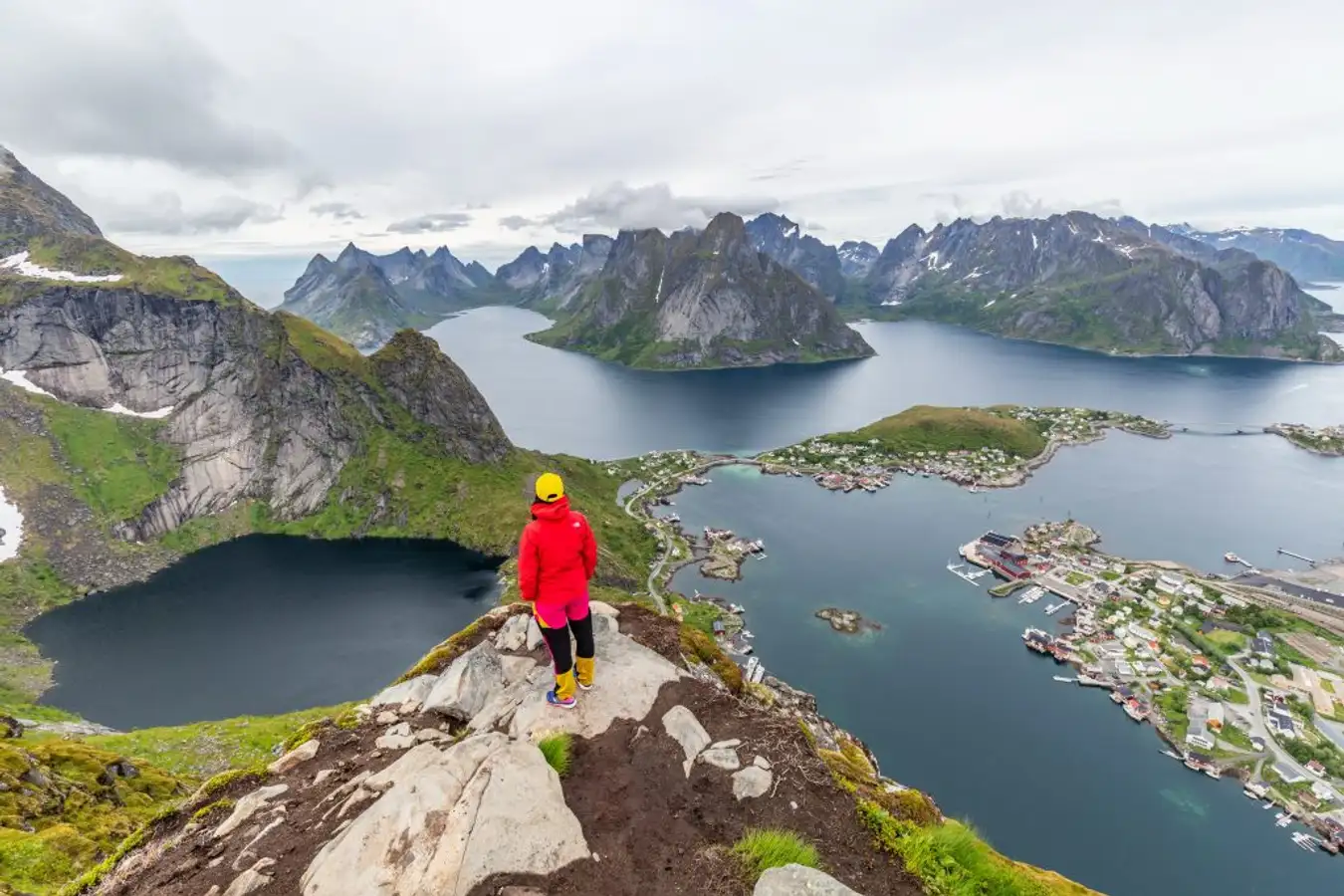
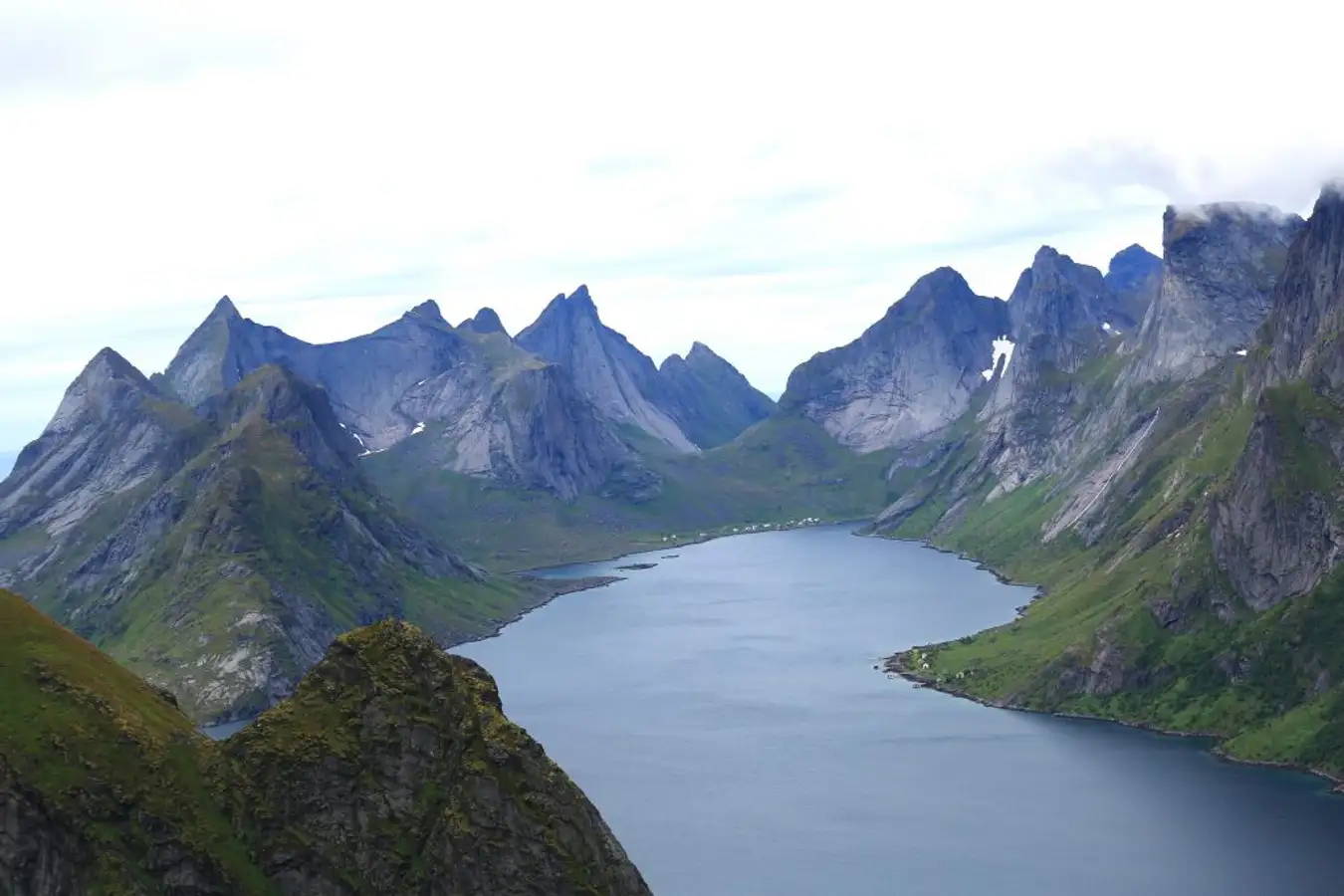
Å Village
Just five miles from Reine at the end of the E10 road is the village Å, the last letter of the Norwegian alphabet. This small village serves dual purpose as a fishing village museum. Founded by a local history team, the purpose of the museum is to preserve the fishing village rather than build anything new. The old houseboat has been converted to host most of the museum’s exhibits, but the whole new village is the real exhibit.

Gimsoy Island
Gimsoy is the smallest island in all of Lofoten, with colorful wooden houses hidden between the mountains and the sea. One of the most popular activities here is horseback riding and walking along the trails.
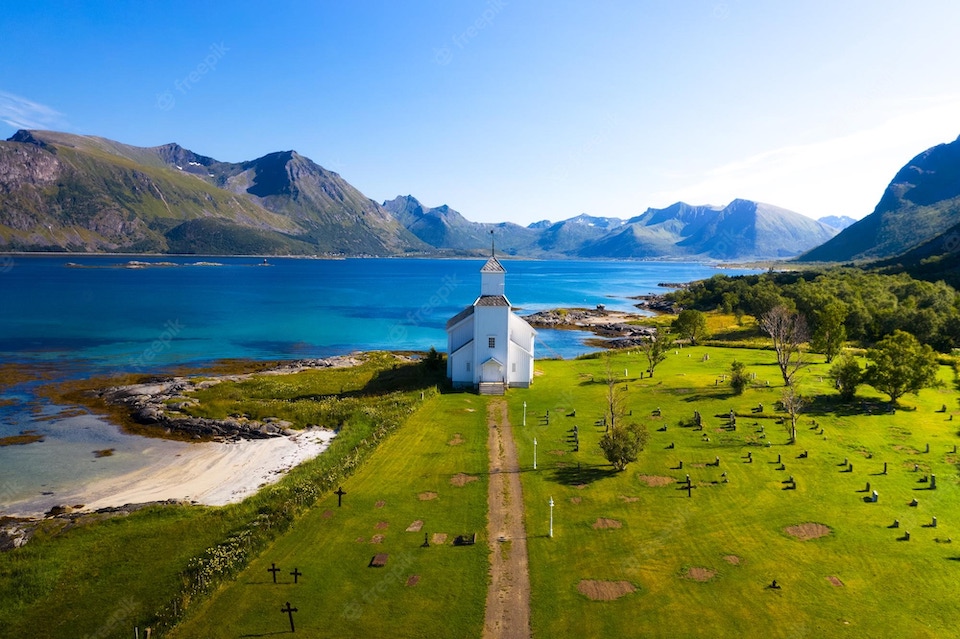
Nusfjord Village
Nusfjord is a peaceful fishing village with its own museum, antique shops still operating throughout the village’s history and majestic natural scenery, mountains on one side, sea on the other.

Lofotr Viking Museum
Address: Vikingveien 539, 8360 Bøstad, Norway
Hours: Wednesday; Saturday: 10AM–4PM
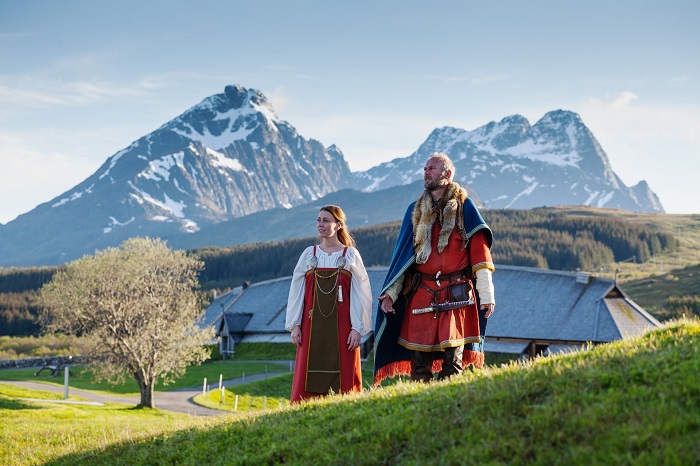
Lofoten has strong links to the Viking Age, and at the Lofotr Viking Museum in Borg you can discover how the Vikings once lived during the reconstruction of the largest Viking house ever found from the time. The building is 83 meters long.
Stamsund
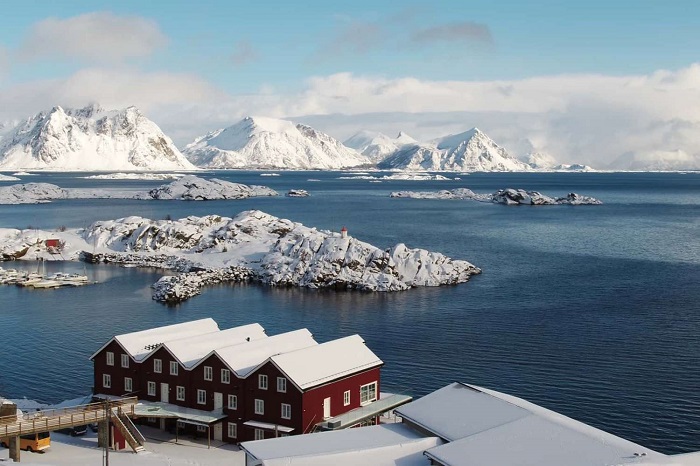
A traditional trawl fishing village, Stamsund has a population of just 1,000 but enjoys a vibrant cultural life thanks to the local theater groups and artists that have settled here. Daily visits to the village from the Hurtigruten ferry will have more to see and do than you might expect.
Lofotodden National Park
Address: Kirkeveien 38, 8390 Reine, Norway
An area of more than 100 square kilometers in the western part of the archipelago has become Norway’s newest National Park, because of landscapes and natural habitats not found in other reserves.
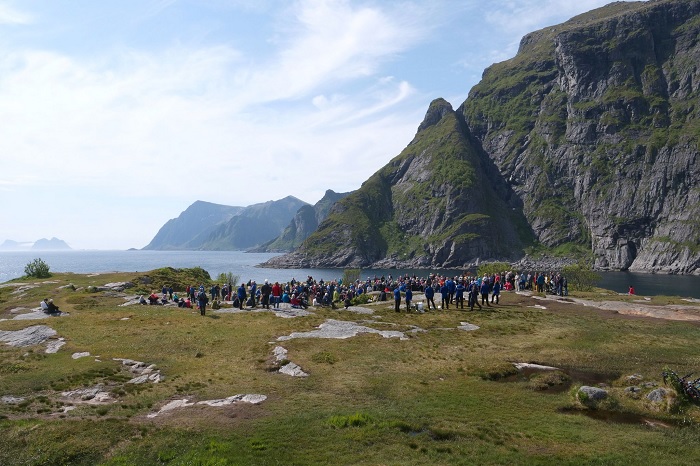
As with other Norwegian National Parks, the area is allowed to be used for outdoor activities that are not harmful to the environment, including hiking, fishing and hunting.
Beautiful beaches
Lofoten is ranked by Lonely Planet as having the most beautiful beaches in Europe. When you drive around the archipelago or hiking you will pass white sand beaches, clear blue water surrounded by majestic mountains like Haukland, Ramberg, Unstad, Uttakleiv, Horseid, Bunes, Gimsøy, Rørvika and Kvalvika. In addition to sunbathing, enjoying the natural scenery you can try thrills with windsurfing, very interesting and exciting.
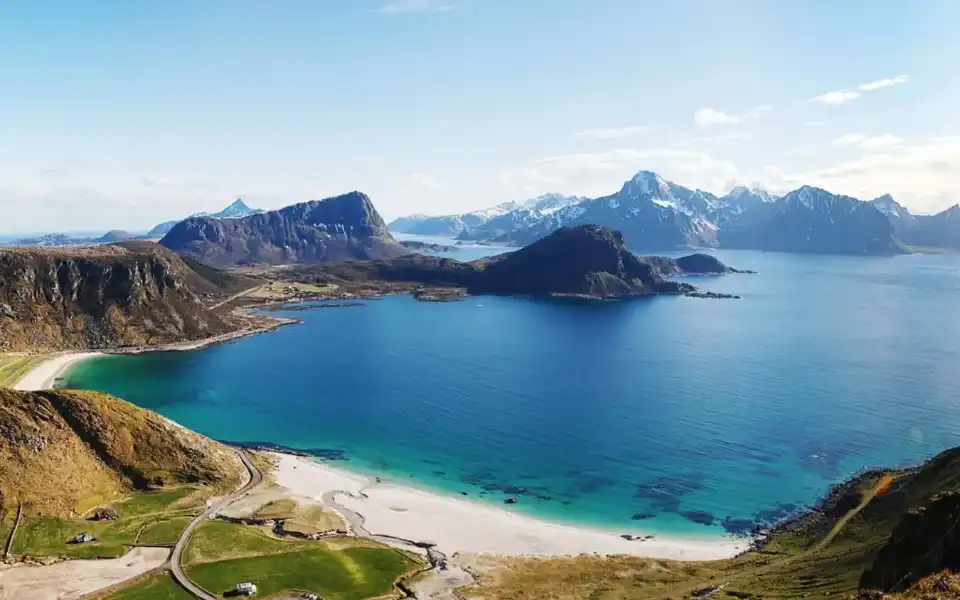
Hiking
From breathtaking panoramic viewpoints to remote beaches, few places on earth offer such a majestic nature stage for hiking enthusiasts in Lofoten. Whether you want to stroll along a beach or hit some of the most challenging hikes in Scandinavia, there’s a hike for you on these islands. The westernmost island, Moskenesoy – offers the most popular trails with several expedition and guide companies based in and around Reine.
Many of the best beaches in this part of Norway are only reachable on foot, a bonus for those willing to go hiking with some of the country’s beaches!
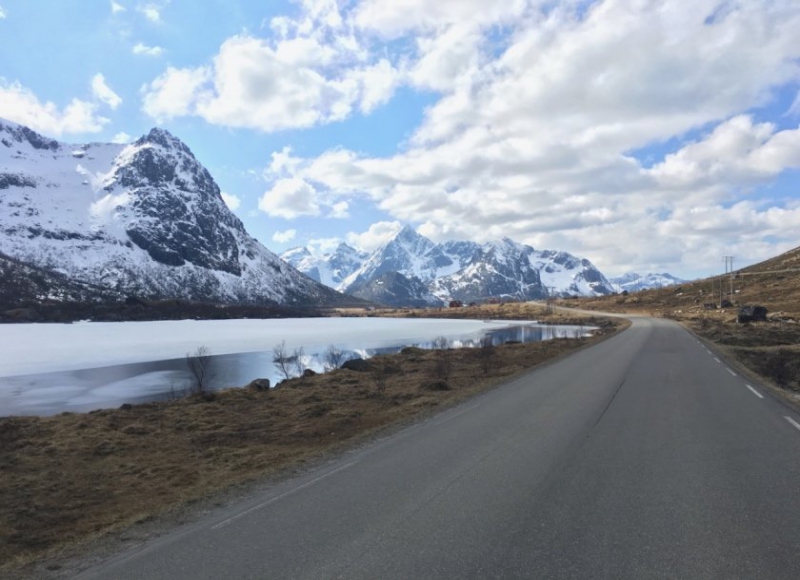
Lofoten is a paradise of hiking and trekking, there are dozens of long and short treks ranging from one day to many days and the scenery is breathtakingly beautiful. In Lofoten, whether you are a regular trekker or never hiker, you should try at least one trek in Lofoten. Here are some famous treks:
- Reinebringen: Starting from Reine village, you will climb about 2000 stone steps, about 3-4 hours.
- Matmora: This is one of the most beautiful trekking trails in Lofoten. The distance is about 13km round trip and it takes 8-9 hours to walk.
- Munken (Moskenesøya Island): 5.5km long in two-way, about 4-5 hours walk. You will go on the trail and come to two red wooden houses next to a very romantic mountain lake.
- Veinestinden: 10.5km long in two-way, walking in about 8-10 hours. Veinestinden is located between Reine and Moskenesøya, the scenery is majestic and poetic.
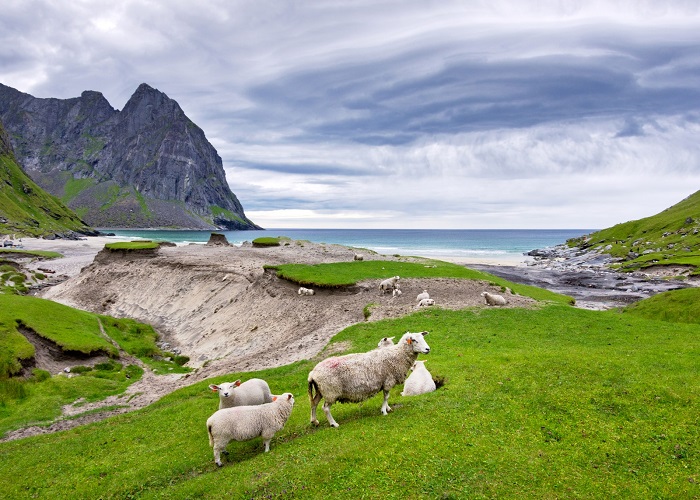
Photography
Lofoten’s ever-changing weather creates fascinating lighting opportunities for professional photographers as well as amateurs looking to take selfies. More and more people are discovering the magic of the islands and are choosing to set foot on the islands for weeks at a time to get the best photos and even 4k videos.
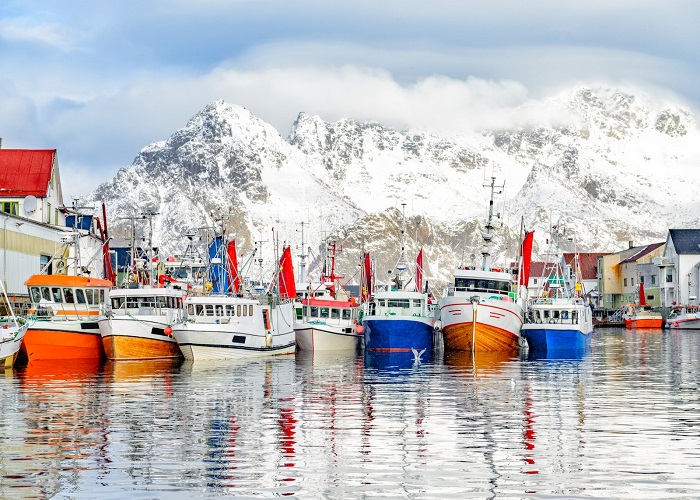
Admire the Northern Lights
While Tromso and Alta are the places to see the Northern Lights in Norway, the lack of artificial light makes the Lofoten Islands an attractive option. The only downside is its coastal location which means higher cloud coverage in Tromso and Alta. But the islands are still an incredible place to visit and doesn’t stop photographers and aurora hunters from heading to the Lofoten Islands in the hope of being able to see this natural phenomenon.
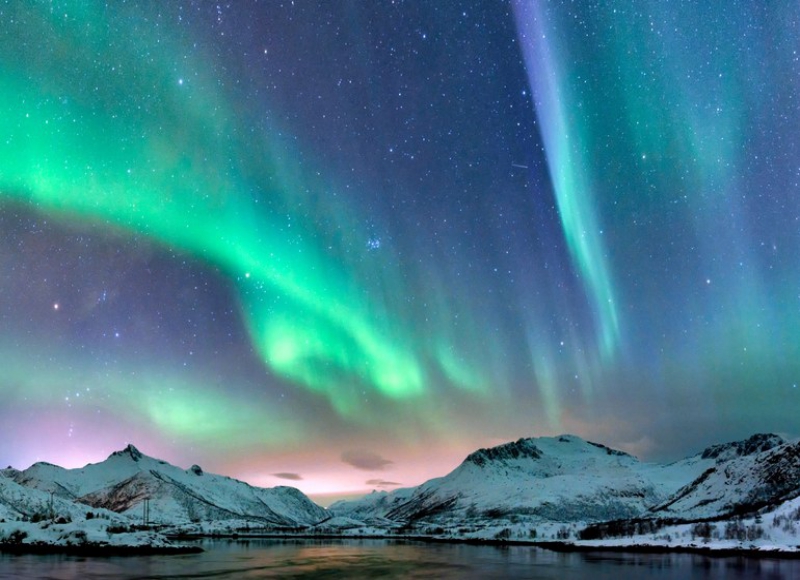
Surfing
The deep sea that surrounds Vestvagoy Island slopes steeply as it approaches Unstad beach, making the bay a magnet for cold-water surfers. In the international surfing community, it is known as one of the best spots in Europe to surf.
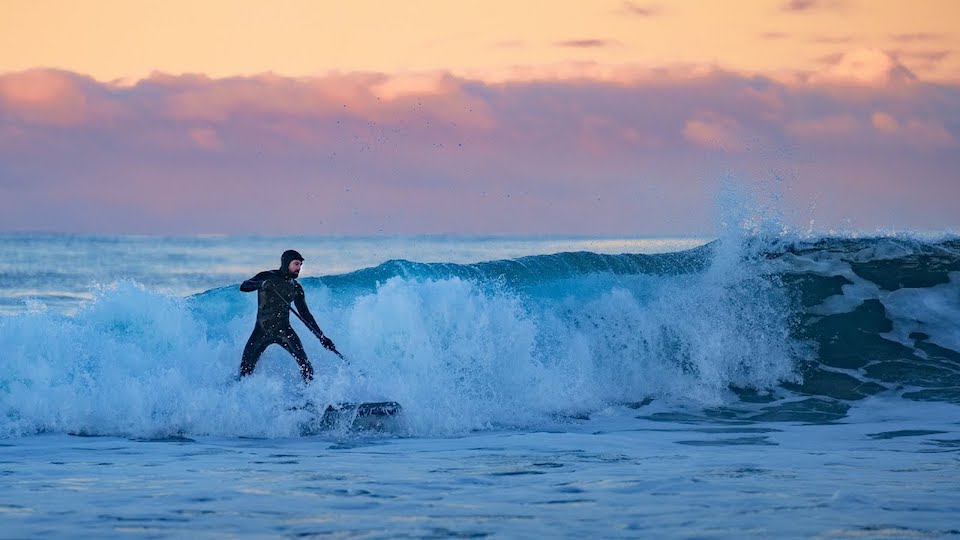
The waves are most stable in the fall and winter, but this is not a place for beginners. This is also the most likely time of year to see the Northern Lights, creating a truly unique aurora hunting experience for all surfers!
Midnight Sun
In addition, have you ever known the night sun? This will be an interesting experience when you come to Lofoten. This phenomenon occurs when the sun does not set for several weeks in summer affecting locations south of the Antarctic Circle and north of the Arctic Circle, which includes the Lofoten Islands. The event is like a dreamy sunrise or sunset allowing visitors to enjoy them 24 hours a day. On top of that, the night sun becomes the dominant landscape of northern Norway from mid-May to July.
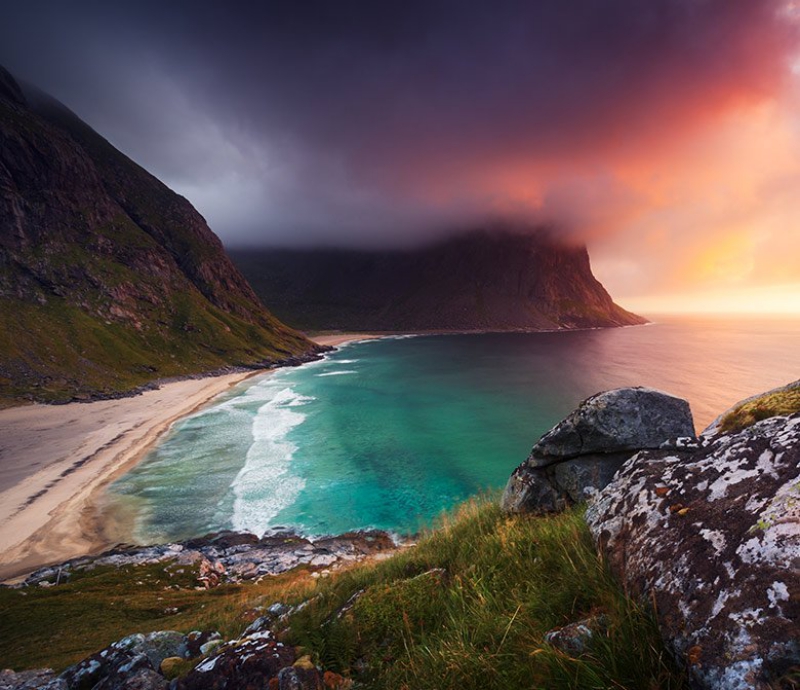
Scenic ride
You don’t have to try to go hiking, simply get in a car and enjoy the atmosphere. E10 is the road through the archipelago connecting the islands. The stretch from Svolvær to Å village is one of Norway’s designated National Scenic Routes. Along the way there are rest stops and picnic areas along with interesting architecture to complement the natural setting.
What to eat in Lofoten?
If fishing industry has shaped the development of the Lofoten Islands, then stockfish is the famous dish of this place. Stockfish is air-dried but unsalted and requires a delicate balance of conditions. The Lofoten Islands are the perfect meeting place for those conditions: you need to catch fresh (most stockfish is made from cod, although reliquary, pollock, haddock and other varieties are also use), stable temperature and salty wind to aid the drying process.
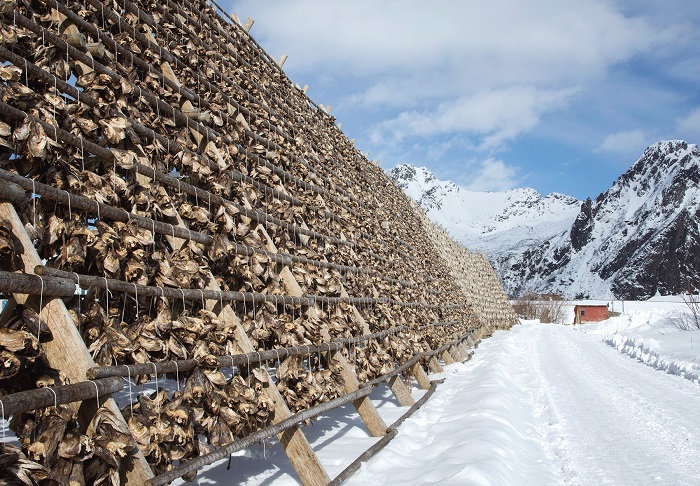
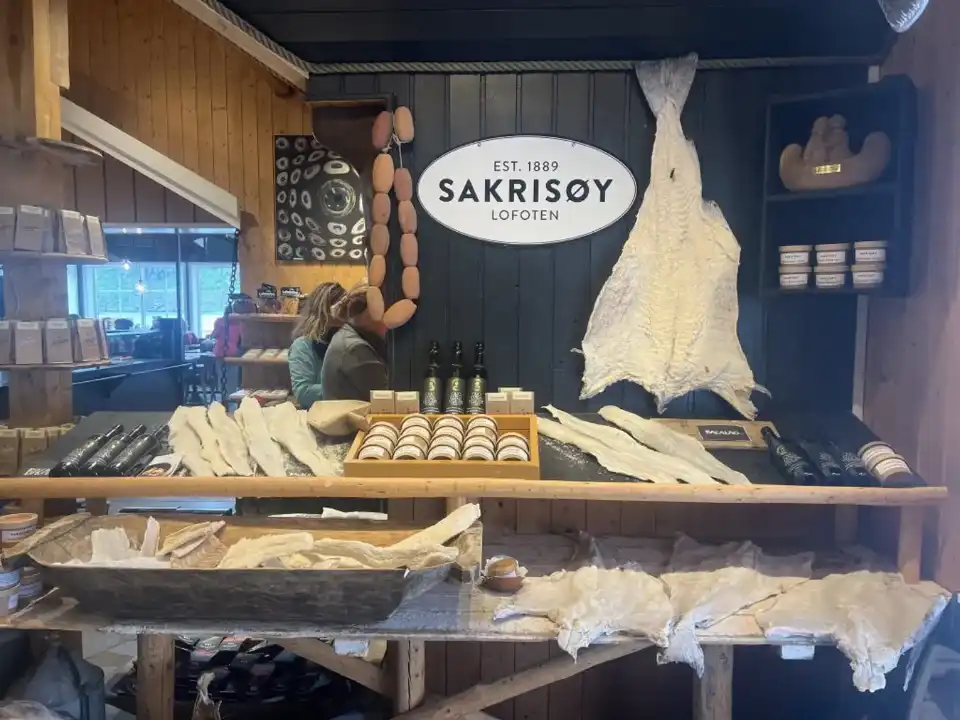
Lofoten seaweed: In addition to cod fish, a recent emerging food, some residents have found a way to create a range of crafts using high-quality seaweed that thrives in the waters surrounding the islands.

Where to stay?
If you only stay in Lofoten for 1-3 days, then choose a hotel in Svolvaer (Agoda, Booking) or Kabelvåg (Agoda, Booking) because these two areas are the most densely populated, there are many choices of hotels, cottages, rorbuer, restaurants, guesthouses, service and quite close to the airport, convenient for moving.
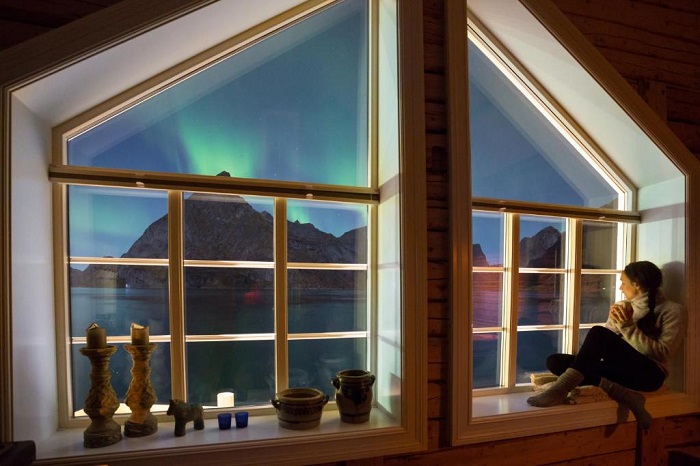
If you plan to stay in Lofoten for a long time you can spend 1-2 days first in Svolvaer/Kabelvåg then go to Reine village, Å village or Henningsvær village to explore many places in Lofoten.
Popular booking sites like Agoda.com, Booking.com offer a lot of options for hotels, traditional rorbuer, motels with many different prices for you to choose from. Some suggestions for hotels/rorbuer:
- Svolvaer: Lofoten Rorbuer (Agoda, Booking)
- Kabelvåg: Lofoten vandrerhjem Kabelvåg (Agoda, Booking)
- Reine: Eliassen Rorbuer (Agoda, Booking)
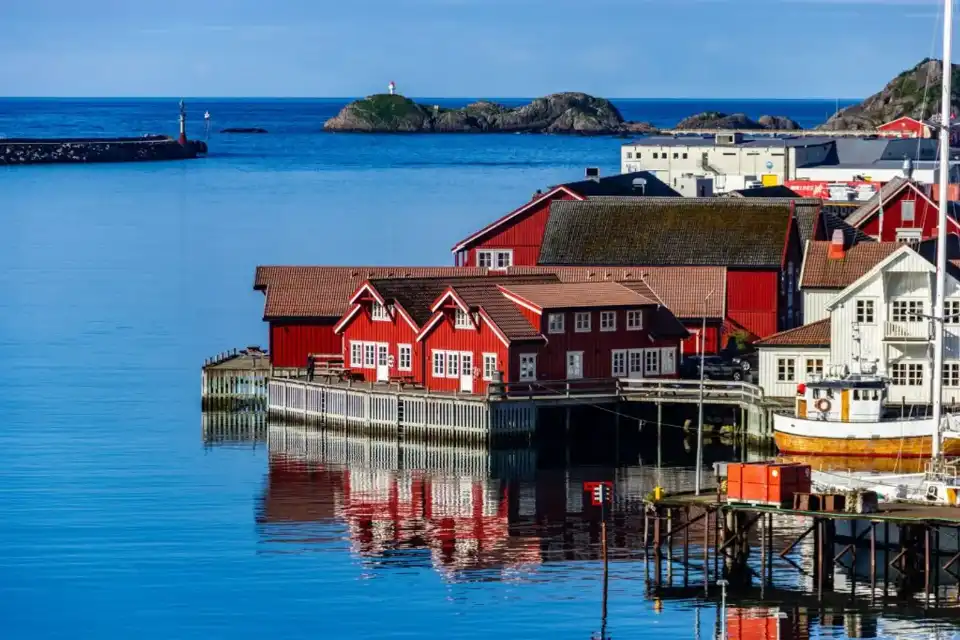
Below we recommend more best budget, mid-range and upscale hotels with good ratings and reviews you can refer to.
- Svinoya Rorbuer (Agoda, Booking)
- Henningsvær Guesthouse (Agoda, Booking)
- Thon Hotel Lofoten (Agoda, Booking)
- Nusfjord Arctic Resort (Agoda, Booking)
- Hattvika Lodge (Agoda, Booking)
- Anker Brygge (Agoda, Booking)
- Statles Rorbu- og Konferansesenter AS (Agoda, Booking)
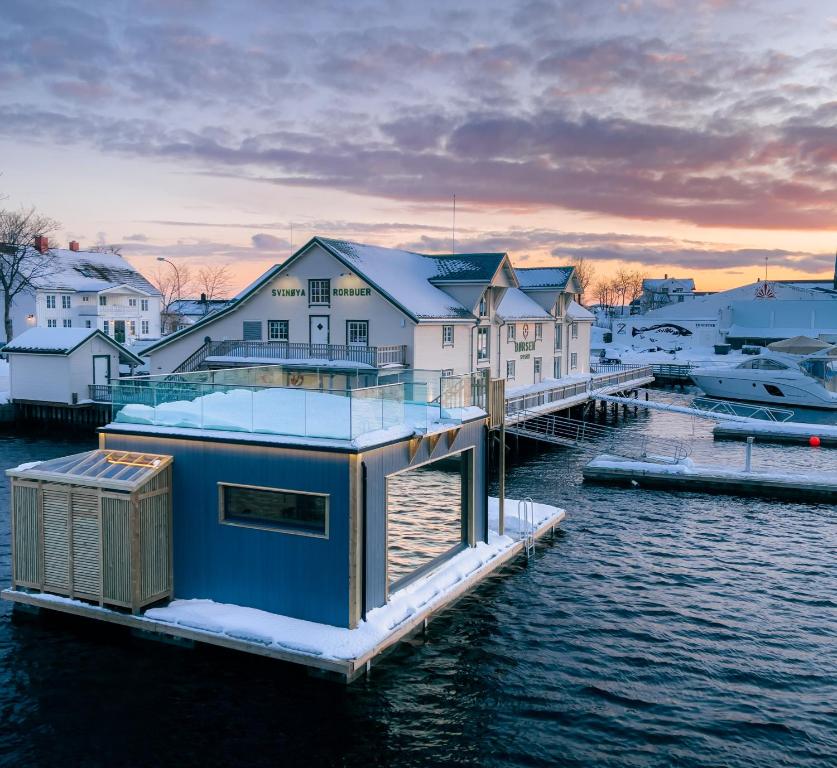
Check out more top and best hotels in Lofoten on Agoda.com or Booking.com
Suggested Lofoten itinerary 6 days
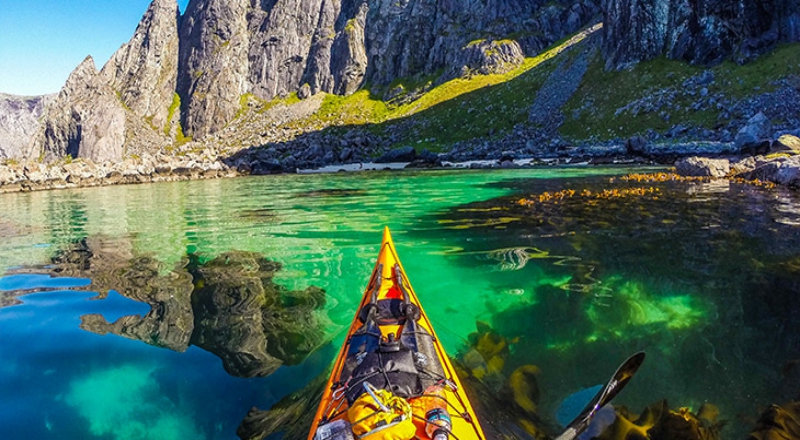
- Day 1: From Oslo Gardermoen Airport you fly to Svolvær Airport or Harstad/Narvik Airport, where you will pick up your booked car and explore the town of Svolvær.
- Day 2: Explore Svolvær, Kabelvåg and drive to the so-called Venice village of Lofoten – Henningsvær.
- Day 3: From Svolvær you drive to the village of Reine, explore the village and climb to the top of Reinebringen.
- Day 4: Trekking the Matmora or Veinestinden route.
- Day 5: Explore the wonderful beaches of Lofoten such as Uttakleiv, Horseid, Bunes, Gimsøy, Rørvika…
- Day 6: Going to A village and then to the airport/ferry, goodbye Lofoten.

Travel cost
The cost in Norway in general and in Lofoten is very expensive, estimated as follows
- Hotel: 80 Euro/person/night
- Meals: 40-80 Euro/person/day
- Car rental and gas filling: 60-70 Euro/person/day
Total estimated cost of a day in Lofoten for one person: 200 Euros.
“The beauty of this place is amazing” – that is the saying of many people when coming to Lofoten. Although the cost is expensive and the travel is tiring, Lofoten is a place worth coming here once in your life. You will see a Lofoten that is both majestic, romantic, charming and wild, and I am sure that this will be an unforgettable destination in Norway. Perhaps more than any other Norwegian, the Lofoten Islanders are happiest outdoors. And with such great things, you should visit Lofoten once!
Read more Norway guide here.
































